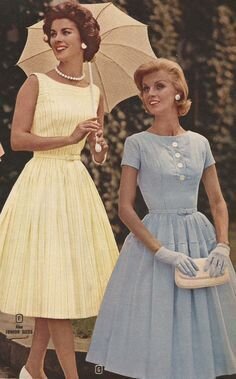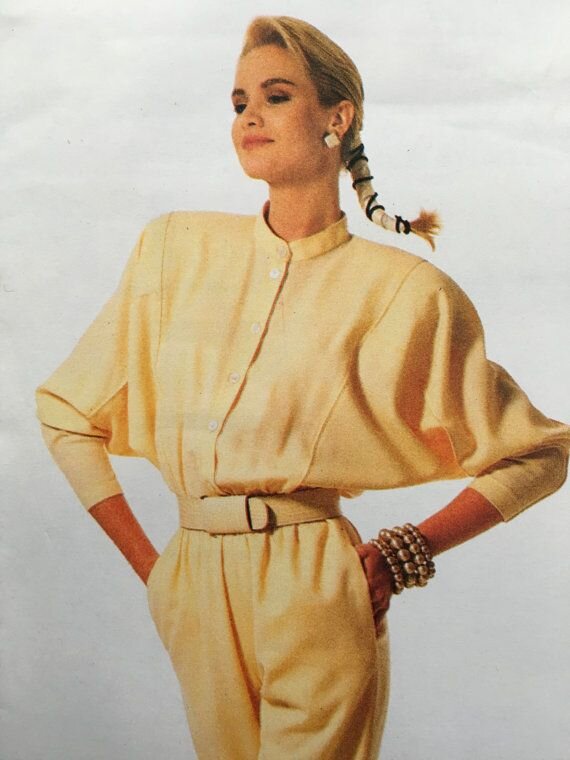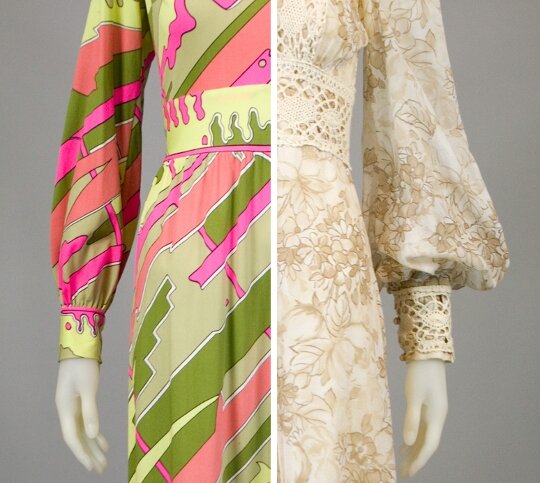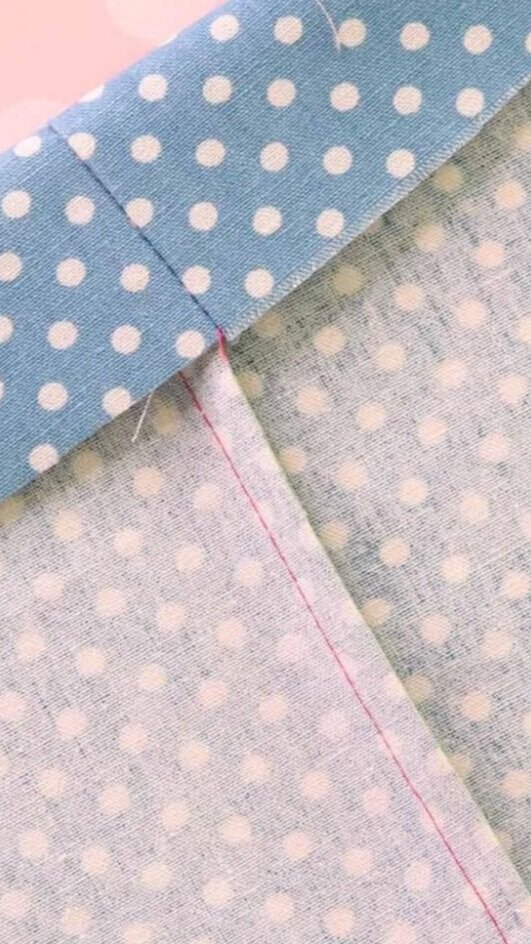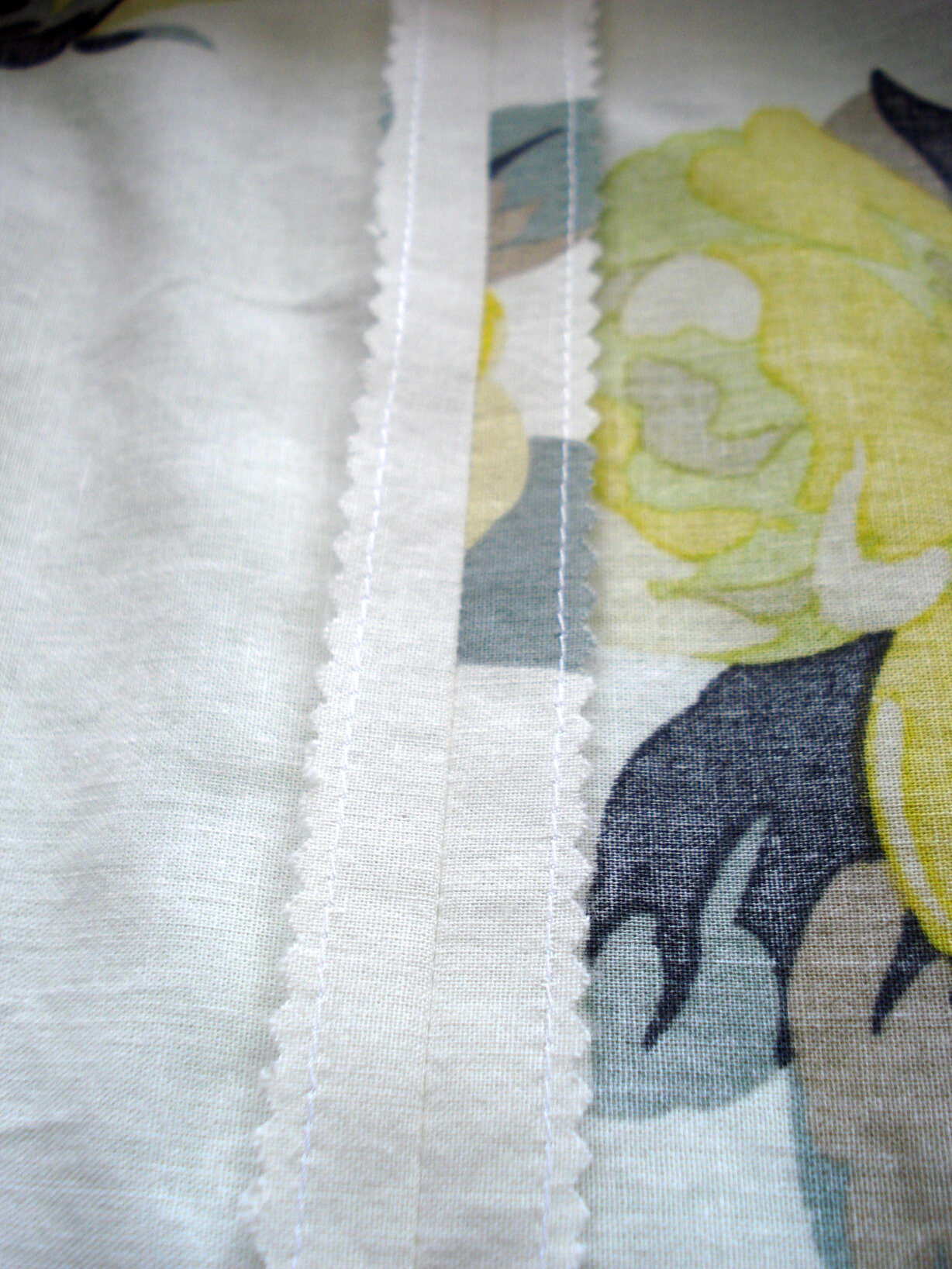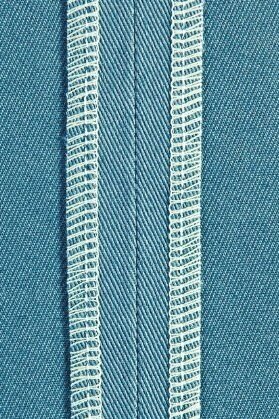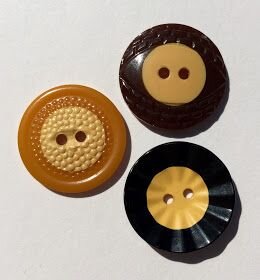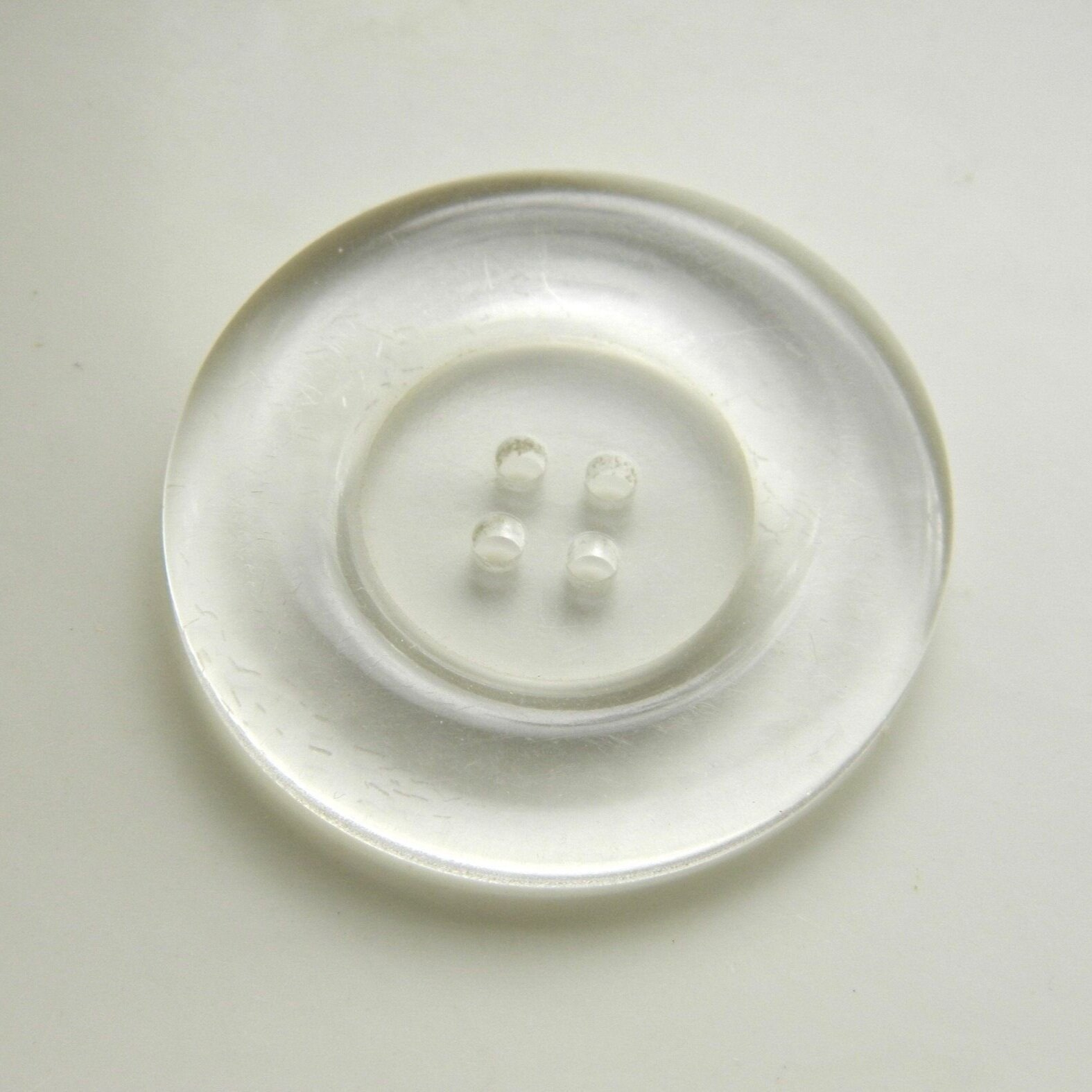What is Vintage Clothing?
Have you ever picked up something at a thrift store and wondered if it was truly vintage or not? Or have you ever questioned how people identify the decade a garment is from just by looking at it? Well, I’m going to give you a list of ways to help you quickly spot a vintage piece so that you can easily navigate your way through a thrift store or online shop!
How old is vintage clothing?
The term "vintage" typically refers to items that are between 20 and 100 years old. However, the specific time frame can vary depending on the context and industry. In the fashion industry, vintage clothing commonly refers to garments produced from the 1920s to the 1990s. This means that, as of 2023, vintage clothing would include items from 1923 to 2003.
It's important to note that the concept of vintage can be subjective and may vary depending on the perspective of different individuals or collectors. Some people might consider items from the early 2000s as vintage, while others might have a stricter definition and limit it to earlier decades. (check out my experience scoring a massive haul of vintage clothing all for free)
Where does the Term Vintage come from?
The term "vintage" originally referred to the wine industry, indicating a specific year or crop of grapes. Over time, it was adopted in the fashion industry to describe clothing from a particular era. The concept of vintage clothing gained popularity in the 1960s and 1970s when people started appreciating fashion from earlier decades. Want to learn more about how to shop for and Identify vintage clothing? Read my blog post, What is Vintage clothing to learn more.
It’s easy to confuse the term vintage with retro, to understand the differences are, read my blog post what does retro mean to understand the difference.
Tips for Vintage Shopping
There are a lot of details to pay attention to when you’re looking for a vintage piece, so I’m going to break down the main things I stick with. The Blue Kimono also provides a really great top tips list to help you date vintage clothing.
1. Check the Style/Silhouette
Notice the shape of the garment. What type of waist does it have, what is the shape of the skirt, does the top have shoulder pads, etc.? Some signature styles of the ’50s include tiny waist dresses and billowing skirts, while ’80s tops and jackets usually had shoulder pads. The Vintage Fashion Guild provides a detailed timeline of notable styles (including pictures) ranging from the year 1800 to 2000.
Left: ’50s dresses (Source: Chasing Daises)/ Right: ’80s shoulder pads (Source: Pinterest)
Sleeves:
The first thing to check is the sleeve style. Is it tailored or oversized?
Left: Tailored Sleeve/ Right: Bishop Sleeve
(Source: Sammy D Vintage)
Before and during the 1960s, sleeves were tailored to each person’s arm.
From 1970 and on, sleeve styles started embracing the space between skin and sleeve - this started the Bishop sleeve trend that was a part of the ’70s Edwardian style.
The 1980s were all about BIG - big hair and big shoulders, so it’s no surprise that large sleeves like the batwing, dolman, and puff shoulder sleeves were top trends during that period.
2. Check the Fabric and Finishes
Seams:
The main thing to notice about seams is the style - are they frenched, pinked, or serged?
Left: Frenched (Source: Treasurie)/Middle: Pinked (Source: Vintage Belle)
Right: Serged (Source: Pinterest)
French Seams have a polished finish (these were standard seams in items made before and during the 1940s).
Pinked Seams resemble scalloped teeth and were popular during the 1950s.
Serged Seams secure the fabric with an overlock stitch, leaving a zig-zag pattern. These seams became common in the mid-1960s.
Unfinished/Fraying seams typically indicate that the piece was made before the 1950s.
Homemade clothing can resemble a vintage piece even if it’s not one. Always check to see what type of seam there is, and be sure to look for a manufacturer’s tag if the item doesn’t have serger seams (this will indicate whether or not it was commercially made).
Zippers:
What to look for: Does the item have a zipper? If so, where is it placed, and is it made of plastic or metal?
Metal zippers were created in the late 1800s but weren’t used until the ’20s, while Plastic zippers (also known as “woven”) were first used in 1963, followed by nylon (plastic) coil zippers in 1968 – these were used in almost every item that was produced at that time and are the zippers we use today.
Side zippers became the norm between the ’30s and ’40s, while back middle zippers were standard of the ’50s and ’60s. Once the ’70s hit, the back middle became the only zipper placement used.
**The Vintage Fashion Guild has a quick zipper timeline that’s a great reference point!
Buttons:
Buttons can be broken down into three types of plastics: Bakelite, Lucite, or Modern.
Left: Bakelite (Source: Sherbert McGee)/ Right: Lucite (Source: Pinterest)
Bakelite buttons became the first-known synthetic plastic and were used during the 1930s and ’40s (you can identity a Bakelite button because it’s usually colored).
Lucite buttons were staples of the 1950s; they are clear, transparent pieces of plastic.
The use of Modern plastics made buttons start looking “cheaper” during the 1960s and after (our current clothes use a lot of modern plastics).
Lining:
Does the item have a lining or not?
No Lining: Items made before 1970 usually don’t have linings because slips were popular during that time and acted as liners.
Linings became popular in the 1980s as the styles focused more on fitted and body-conscious looks (A garment with a lining might be from the ’60s or ’70s but is typically from a later date. The difference between lined and non-lined pieces from the ’60s and ’70s is the material – polyester pieces are usually from the ’70s).
3. Check the Tag
Brand tags vary by decade. To help you determine what year the piece is from, I’ve included this list - just search by the brand (they have a ton of pictures, history, and dates from a variety of designers).
Handmade:
Most handmade items don’t have tags or labels; this is usually common for items made between the 1950s and 1970s.
Care Tag:
Care tags are found stitched inside the item. Most items with care tags date to 1972 or later as the Federal Trade Commission made it mandatory for all manufacturers to include care instructions inside their pieces starting in 1972. Items with a brand tag but no care instructions were made before 1972 (or the care tag could have been cut out).
Care tag (Source: Sammy D Vintage)
Union Tags:
Union tags have been used for over a hundred years in US apparel production, but they also appear in items made after the year 2000. If an item has a union tag (union tags can include the letters ILGWU, AFL, AFL/CIO, or CIO), you can pretty much guarantee that it’s vintage. For a full break down on union labels, check out this guide by Sammy D Vintage.
Union tag (Source: Pinterest)
Made in CA:
If an item has a California tag, it was made between the 1930s and 1970s. During that time, west coast Hollywood glamour was the inspiration for the trends, but after the ’70s, the look began losing popularity.
Made in CA tag (Source: Pinterest)
Made in Hawaii:
If you find an item that has a tag with a Hawaiian city or island on it, it can be dated between the 1930s and 1960s. Travel to the Pacific islands during that time sparked an interest in Hawaiian style and continued as Hollywood celebrities started wearing Hawaiian-inspired looks. Even if they couldn’t travel to Hawaii, American women still wanted to wear the trend. This opened the door for American brands to create their own Hawaiian-inspired pieces.
Made in Hawaii tags
(Source: Vintage City Clothing)
Fiber Content:
Fiber content tags have been required in garments since 1960, so vintage-looking items without fiber content could be older than 1960 (but keep in mind, the tag could have been cut out). In the 1950s, fiber tags didn’t always include the material percentage (for example it might just say “cotton” with no percentage next to it).
Fiber tag (Source: Sammy D Vintage)
Size:
A quick way to determine if an item is vintage or not is to compare it against a modern piece with the same size listed. Standardized sizing started in 1958, so any piece without a size listed is most likely older than 1958.
What size am I in vintage clothing?
Some info about sizing…
Due to varied sizing standards in the US, most vintage clothing is smaller than modern sizes - a size medium in a ’70s piece could translate to an extra small in 2010. Larger sizes were also pretty rare before the 1980s, but sewing patterns provide vintage-inspired options for someone who can’t a piece one in their size.
The standard in vintage sizing is that you’re usually “six numbers larger” than your modern size, so if you’re a modern size 4, you’ll wear a 10 in vintage (note: the sizing system changed again in 1984 to “four sizes larger” than modern sizes - keep that in mind for ’80s pieces).
**Use the counting system to help you determine your size.
I know I just gave you a LOT of information, but I promise that once you start paying attention to these details, it will become really easy to find a vintage item. I hope all of these tips help you score some awesome pieces on your next thrifting trip or when you’re vintage shopping online.
Check out my video, “How to Style Vintage and Modern Clothing” for ideas on how to style some of your finds!


